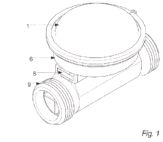
Attempting to "swear behind" an alleged prior art reference has been common practice in IPRs, going back to the first IPR, Garmin Int'l, Inc. v. Cuozzo Speed Tech. LLC, IPR2012-00001 (PTAB 2013), aff'd sub nom. In re Cuozzo Speed Tech., LLC, 793 F.3d 1268 (Fed. Cir. 2015), aff'd sub nom., Cuozzo Speed Tech., LLC v. Lee, 136 S. Ct. 2131 (2016). In that case, Cuozzo was unsuccessful in swearing behind (for failure to exercise reasonable diligence toward reduction to practice), and as we have discussed, patent owners are often unsuccessful in these efforts, for failure to satisfy the legal requirements for proving an earlier invention date. In the most recent of such cases, Apator Miitors APS v. Kamstrup A/S (Fed. Cir. Apr. 17, 2018), the Federal Circuit upheld a PTAB decision canceling challenged claims on the basis that the Patent Owner failed to provide sufficient corroborating evidence for the inventor's testimony that he conceived the invention before the effective filing date of a published patent application.
The challenged patent relates to an ultrasonic meter used for metering the flow of fluids such as water or gas. The petition relied on alleged prior art including a published patent application having an effective date only eighteen days before the Patent Owner's filing date. The Patent Owner attempted to swear behind the reference, arguing that the published application was not prior art because the inventor conceived the claimed subject matter before its effective filing date, and exercised diligence to reduce the invention to practice. In addition to a declaration of its sole inventor, Mr. Drachmann, the Patent Owner submitted the following evidence to corroborate the inventor's testimony: (1) an email from the inventor to non-inventor Tunheim; (2) an image file attached to the email; (3) a second email from the inventor to Tunheim; (4) a presentation file attached to the second Tunheim email; (5) an email from the inventor to non-inventor Bjerngaard; and (6) a number of drawings created before the effective date of the reference.
Despite the number of items of allegedly corroborating evidence, the PTAB determined that the inventor's testimony was not sufficiently corroborated, applying a "rule of reason" analysis in which all pertinent evidence is considered. See Perfect Surgical Tech., Inc. v. Olympus Am., Inc., 841 F.3d 1004, 1007 (Fed. Cir. 2016); In re NTP, Inc., 654 F.3d 1279, 1291 (Fed. Cir. 2011). The court agreed that a "reasonable mind could conclude" that the Patent Owner failed to provide sufficient corroborating evidence, and that the PTAB's decision was therefore supported by substantial evidence.
The Patent Owner's problem, according to the court, was that the inventor's emails did not indicate what images were attached, the drawings in evidence indicated that they were modified after the effective date of the prior art reference, and the Patent Owner relied solely on the inventor's testimony to explain what was attached to his emails and when the drawings were first prepared. Without independent corroborating evidence, the Patent Owner's unrebutted evidence was not sufficient to establish an earlier invention date.
This case is a reminder that patent owners must be careful to satisfy all legal requirements for swearing behind prior art, including providing sufficient corroborating evidence. If the PTAB determines that the evidence was not sufficient, overturning such a decision on appeal may be difficult under the deferential substantial evidence standard.
The content of this article is intended to provide a general guide to the subject matter. Specialist advice should be sought about your specific circumstances.

